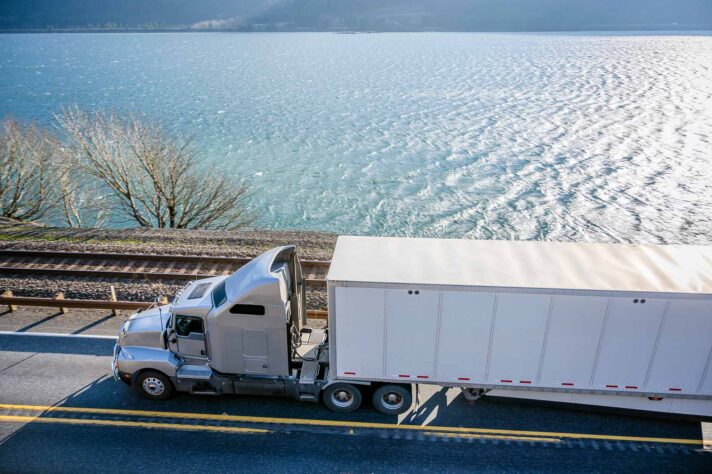Even if this is the first time you’re relocating cross-country, and you’re wondering How do you prepare to move to a new house, our guide will keep you on track and make sure you’re ready for the big day.
The Only Moving To-Do List You’ll Ever Need
You probably think that being organized when relocating is mission impossible, but it’s quite simple with a thorough moving to-do list. Although time-consuming and unfamiliar, there’s no need to be afraid of all those countless tasks awaiting because we’re here to help you get around them step by step.


Your Moving To-Do List Should Be Ready Eight Weeks Before the Move
If you want to avoid anxiety about relocating, it’s important to start preparing for it well in advance. Even though you might be trying to figure out What is the first thing to do when moving, there’s no such thing as the most important one at this point. However, is there a checklist for moving that could facilitate the entire process and guide you through the move? Absolutely yes. With only these few things done on time, you’ll prevent yourself from getting into chaos later on:
- Create a relocation budget – Having a clear idea of the overall budget you’re going to need for all the long-distance moving services, relocation supplies, shopping for the new apartment, etc., is a vital part of the move. This is a good moment to think about what you can do by yourself and which tasks will require the help of professional movers. We recommend creating a template to easily track your expenses and maybe even save some money down the road.
- Find a real estate agent for house hunting – If you’re preparing your home for sale, or you want some house-hunting tips, a good real estate agent will do the trick. When you already have too many responsibilities on your mind, it’s not wise to deal with these in a hurry. Leave it to someone who knows their job, and you deal with other aspects of the move.
- Search for job opportunities – Jump into learning how to get a job before you move as soon as possible because relocating without a job will make your adjustment to the new state twice as hard as it usually is.
- Reach out to your insurance provider – Your insurance doesn’t necessarily move with you, which is why you have to contact your provider in a timely manner and check if there is an option to stay with them, or you have to switch the insurance once you move into a new home.
- Notify important people and organizations – You probably know by now how to change your address when you move. However, it’s crucial to inform all the important people about changing your address, not just your family and close friends. These include the USPS, your bank and credit card companies, Social Security Administration, the IRS, DMV, all the delivery services and magazines you’re subscribed to. Also, update your contact details on all shopping sites you’re using.
- Notify your landlord – when it comes to figuring out who to notify when relocating, your landlord is one of the most important people. Informing them of your leaving is crucial to both parties.
What Not to Forget Six Weeks Before You Move
Although you’re more than a month away from the big day, coming up with all the tasks was just the beginning. Now you have to dig deeper into the organizational process. Sure, there’s still enough time to have it all done, but it’s just the right moment to start checking off some of the important tasks.
Schedule Cross-Country Movers to Help You Move to a New Home
We’re well aware there are many tasks to do and that the need for a professional long-distance relocation company is certainly justified. No matter if you’re going to turn to your close ones for recommendations for relocation companies or opt for thorough online research, make sure to gather as much information as possible if you’d like to avoid dealing with relocation scams. Once you’re sure you have found the best long-distance movers, get a free quote to know what to expect and schedule the move. Every reliable company will give you the approximate figure so you can plan your budget accordingly.
Start Gathering Packing Supplies for Household Items
Gathering packing materials weeks before a move is an essential part of your moving packing list, especially because there are many ways to get supplies for free or at a low price. It’s only one of countless packing tips and tricks you can find out there to make your move more affordable and less stressful. Also, the best-sized boxes and tons of packing paper are pretty much all you need to pack your not-so-sensitive belongings properly.
Start Decluttering Weeks Before the Moving Day
Purging your home is a crucial part of your checklist since the final price of the move depends on it. Professional companies set their prices based on the moving inventory list you give them — the fewer household items, the lower the price. Dealing with unnecessary stuff will also help you deal with relocation stress and avoid overpaying for the move. Ensure to ask around where to donate furniture and other bulky items that you want to leave behind to someone in need.


Don’t Forget to Add These to the Checklist Four Weeks Before the Move
This is officially the last month you’ll spend in your old home, and while you’re there, ensure not to forget anything important. Think about all the records you have to transfer, get all the contact information, create an essentials checklist and stick to it.
Transfer Healthcare Records and School Records
Organizing important papers should be a part of the list of things to do when moving into a new house, especially if you’re relocating with kids. Sorting out your family’s medical records and transferring prescriptions should be settled long before the big day comes. Have copies of vaccinations, too. If your kids are still going to school, there’s a checklist of vital paperwork you should have with you: transcript copies with the official school seal, their test scores, and letters of recommendation.
Don’t Forget Your Pet’s Documentation
The same goes for your furry friends. If you’re relocating with dogs or maybe rather relocating with cats, visit your vet. You’ll need proof of their immunizations and medical records, too, if you want to find them a new vet once you settle into your new location.
Contacting Utility Providers Should Be a Part of Your To-Do List
Depending on where you move, you may not have to terminate utility services entirely, but only to transfer them to the new home. Reach out to all of your utility providers in a timely manner and figure out the best solution. Usually, when relocating long-distance, people have to set up their utilities all over again, so it may be a good idea to start researching utility companies in your new area.
To learn more about how to set up your utilities, check out the video below.
Start the Packing Process Two Weeks Before the Move
If you’re still wondering how to move efficiently, trust us when we say this is not the time to think about how to pack your paintings or what the most systematic way to pack your clothes is. You should already be well-informed on stuff like that. At this point, you should be prepared to pack your belongings with ease. It’s the only way to organize your move strategically and save yourself from a lot of headaches.
Pack Everything Up
As you may have noticed, boxing up your possessions is a complex process that starts way before you carefully stack items into boxes. That’s precisely why there’s no one correct answer to questions like How early should you start packing to move. As early as possible may be the one universally correct answer. Keep in mind that going one room at a time will help you handle the pile. Disassembling all the bulky items will save a lot of space and allow you to pack things without a hitch.
Be Careful With Breakables
Packing fragile items is undoubtedly the most straining and challenging part of the relocation process. If you don’t want to put your family heirlooms at risk, consider investing in professional packing services. It’s certainly worth saving the items passed down for generations. If you’re brave enough to tackle these by yourself, remember to be generous with bubble wrap and padding materials. Some alternatives you find at home can help, too, so feel free to cover the items additionally with blankets, towels, sheets, or anything else you find suitable.
Label Label Label
Putting so much effort into boxing things up just so you could lose track of the content of the boxes is certainly not the goal you’re trying to reach. However, not putting labels will lead you right there, even if that’s not what you wanted. So grab those markers and write down where each of your boxes goes and what’s inside. Label clearly those containers containing breakables on at least three sides.


Know What to Do a Week Before the Journey Starts
Now that you’re getting closer to the finish line, you’re probably feeling overwhelmed. All the excitement and stress that you feel are not easy to handle, but keep in mind your moving list of things to do is almost done. Before you move, be sure you take care of your finances and don’t leave any remaining bills behind. Also, think of a meal plan for the entire week that won’t be too complicated to handle. If you don’t want to end up throwing away any excess food, buy only the things you need and try to eat all the leftovers in the fridge. Last but not least, clean the place by the end of the week.


The Big Day Is Officially Here
Meticulous planning and thorough organization have paid off because the countdown is over, and your to-do list for moving is officially done. You don’t have to drive yourself crazy anymore, wondering if things will go wrong or if you will be ready by the time you scheduled the movers. Now you know the answer – you did it, despite the fear and panic. And although there are many relocation day tips out there, don’t sweat over them too much. Everything will go well without much of a hassle if you wake up early enough, double-check each room before the movers show up, and head off to a new adventure.




